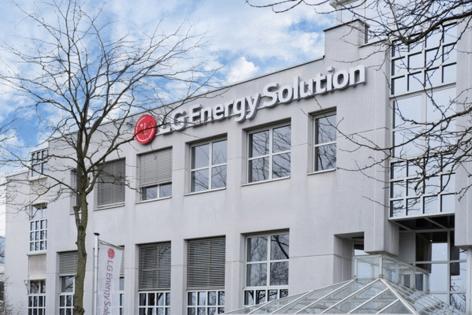LG sees battery breakthrough by 2028 that has eluded Tesla
Published in Science & Technology News
LG Energy Solution Ltd. is aiming to commercialize what’s been described as a game changing battery-making technology by 2028, opening a path for the Korean cell manufacturer to become more competitive with Chinese rivals.
Companies from Tesla Inc. to Samsung SDI Co. are working on dry-coating technology, a process that aims to replace the energy-intensive wet process for making cathode and anode electrodes — a key component of electric car batteries. The search for cheaper and more environmentally friendly ways to produce batteries is becoming increasingly urgent as electric vehicle demand cools.
“Among battery competitors, LG is the top” in terms of dry-coating technology, Kim Je-Young, who became LG Energy Solution’s chief technology officer in December, said in an exclusive interview with Bloomberg News at the company’s headquarters in Seoul. “We started 10 years ago.”
LG plans to complete a pilot production line for its dry-coating process in the fourth quarter, and start full-scale production in 2028, Kim said. It’s the first time LG has disclosed a timeline for commercializing the technology. Kim estimates the dry method can lower battery manufacturing costs by between 17% to 30%.
Tesla, which acquired a dry-coating startup called Maxwell Technologies Inc. in 2019, has attempted to implement the technology to produce its 4680 battery cells in Austin, Texas, with limited success. Wet coating requires costly, energy-intensive steps of dissolving chemicals in toxic solvents that are then dried in a nearly 100-meter-long oven at temperatures as high as 200 degrees Celsius on the battery production line.
With dry coating, battery makers can save on energy, equipment costs and space. They don’t have to invest in drying ovens or solvent recovery systems. Volkswagen AG, which is also trying to develop dry coating at its in-house battery company, PowerCo, has called the technology a “game changer” because it could enable companies to use 30% less energy and 50% less space.
LG is betting on a leapfrog innovation like dry coating to bolster its efforts to compete with Chinese battery makers. Its share of the EV battery market has fallen to 12.6% so far this year versus 14.6% a year earlier. That’s due in large part to the expansion of Chinese players like Contemporary Amperex Technology Co. Ltd. and BYD Co. The average price of a lithium-iron-phosphate, or LFP, battery in China plunged 44% to $53 per kilowatt hour through April, according to BloombergNEF.
Batteries have three major components: two electrodes (an anode and a cathode) and an electrolyte that helps shuttle the charge between them. The materials used to make those components determine how much energy batteries store and at what cost.
Tesla promoted the dry method for electrodes on its battery day in 2020. But the U.S. EV maker has only been able to implement the process on the anode part of the battery, not the cathode, according to Reuters. Tesla didn’t respond to a request for comment on its battery development.
Making the cathode with dry processing is more difficult than the anode because cathodes tend to be made from materials that are harder to handle, experts say.
...continued
©2024 Bloomberg L.P. Visit bloomberg.com. Distributed by Tribune Content Agency, LLC.







Comments